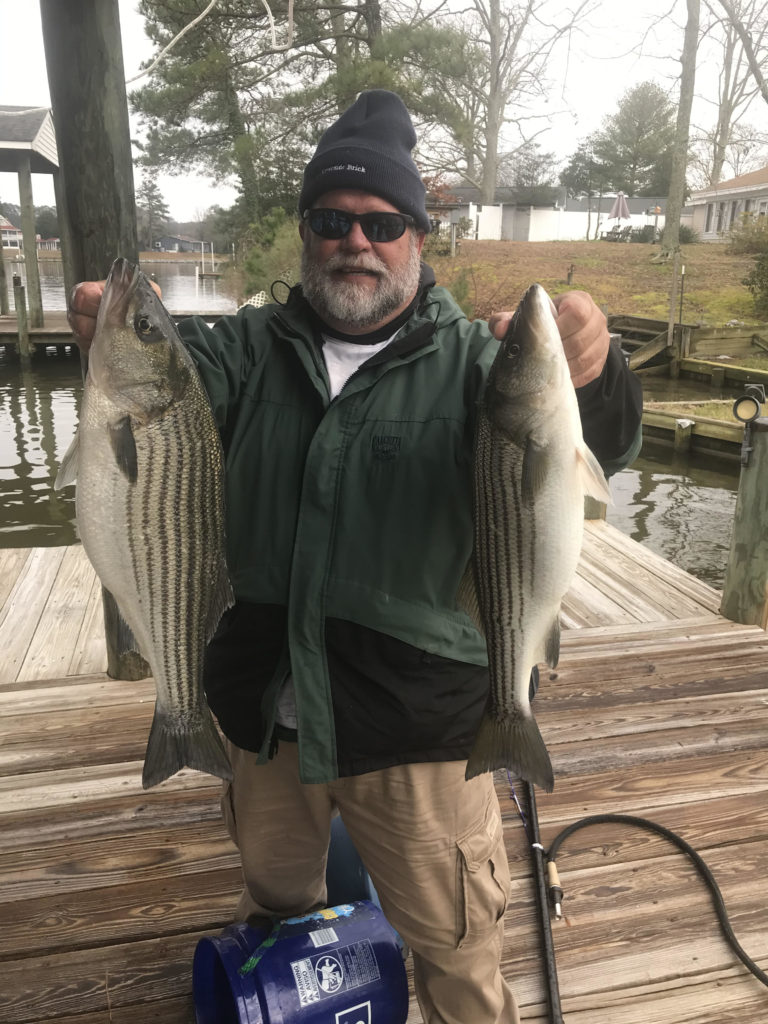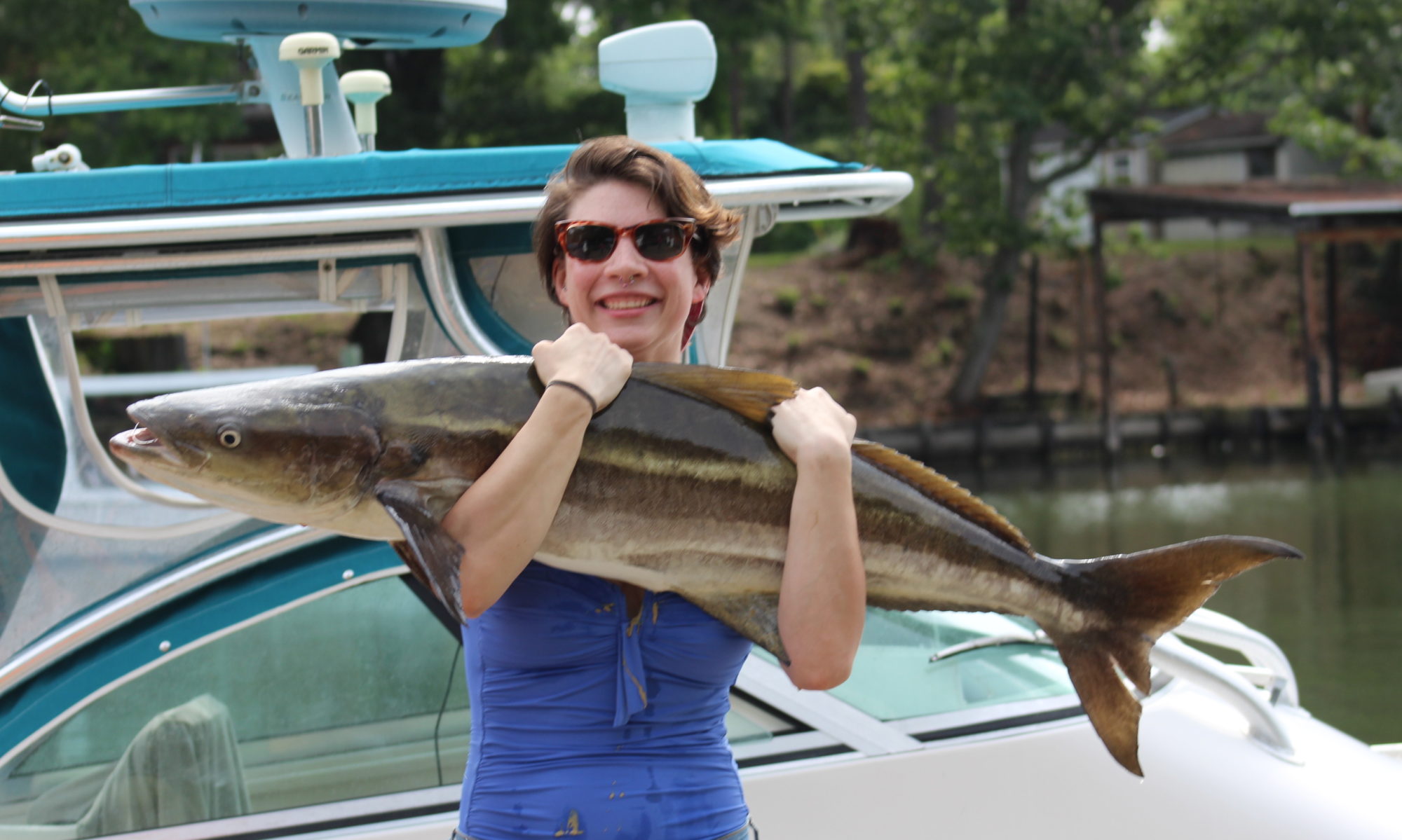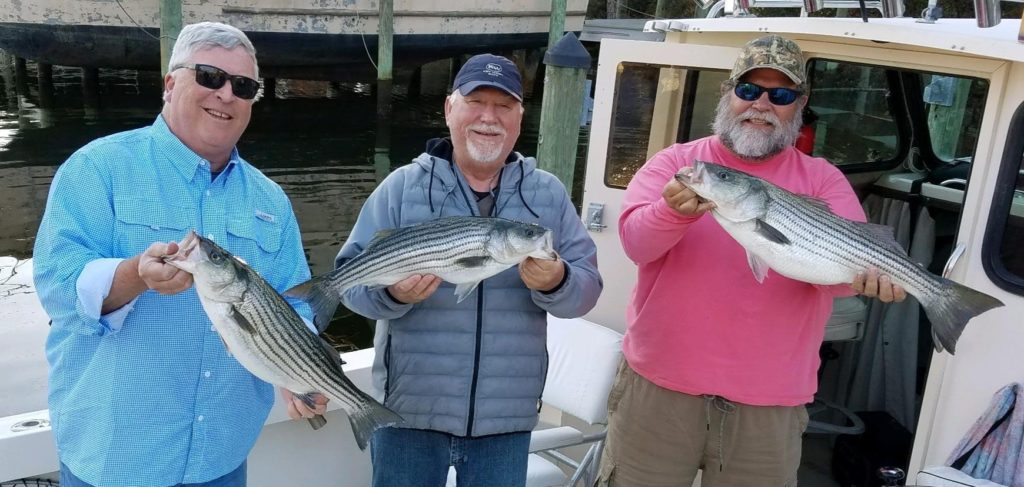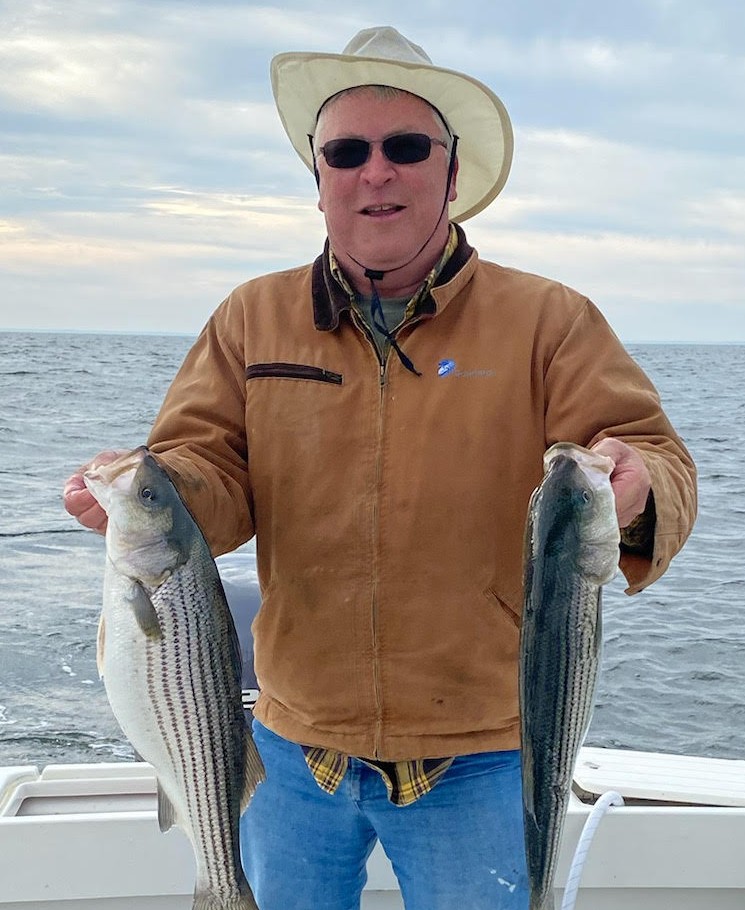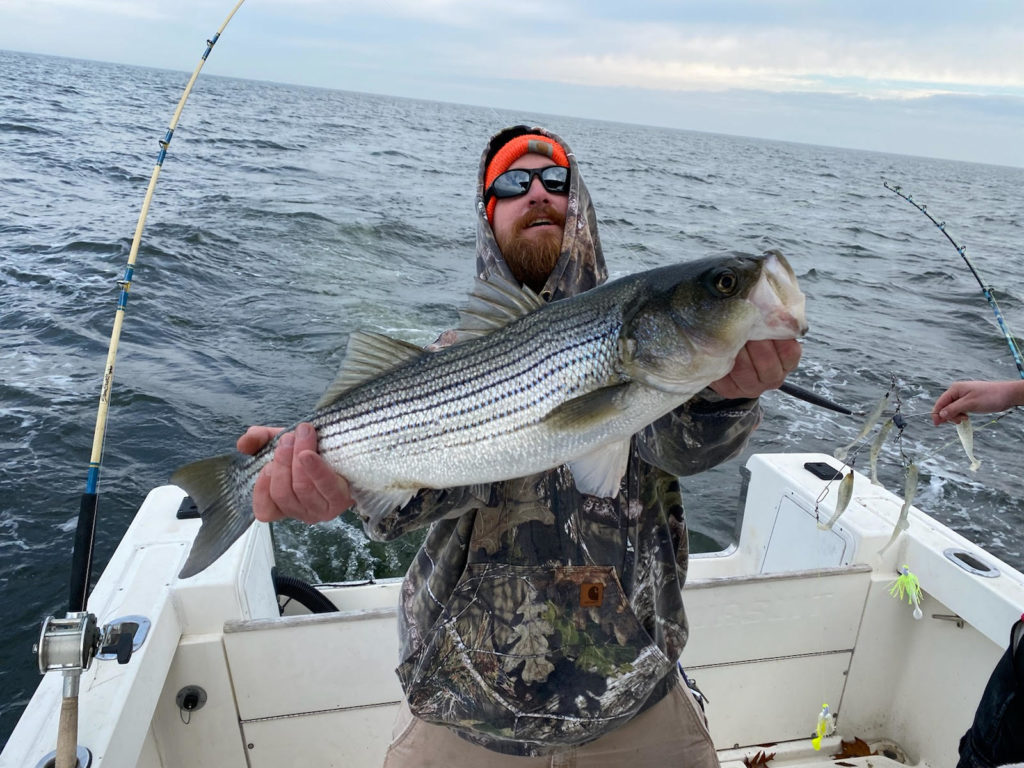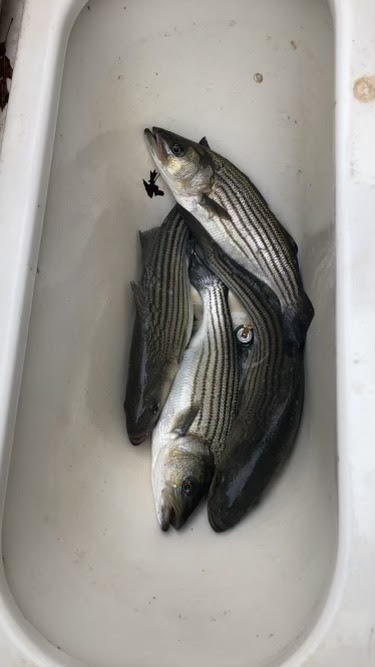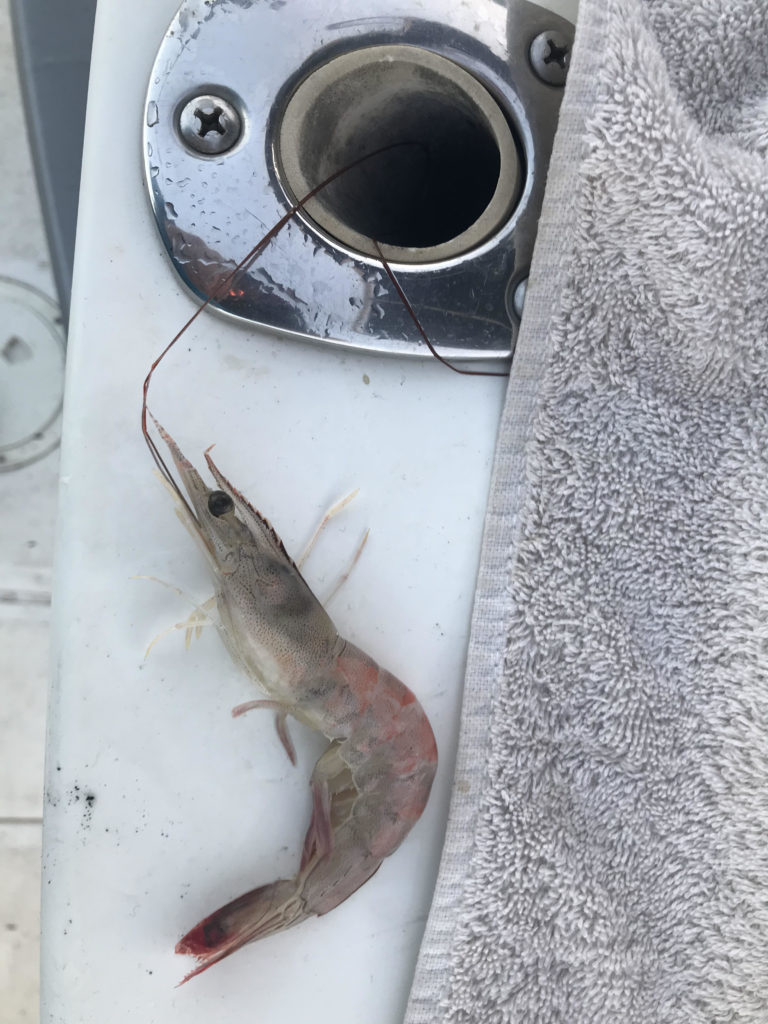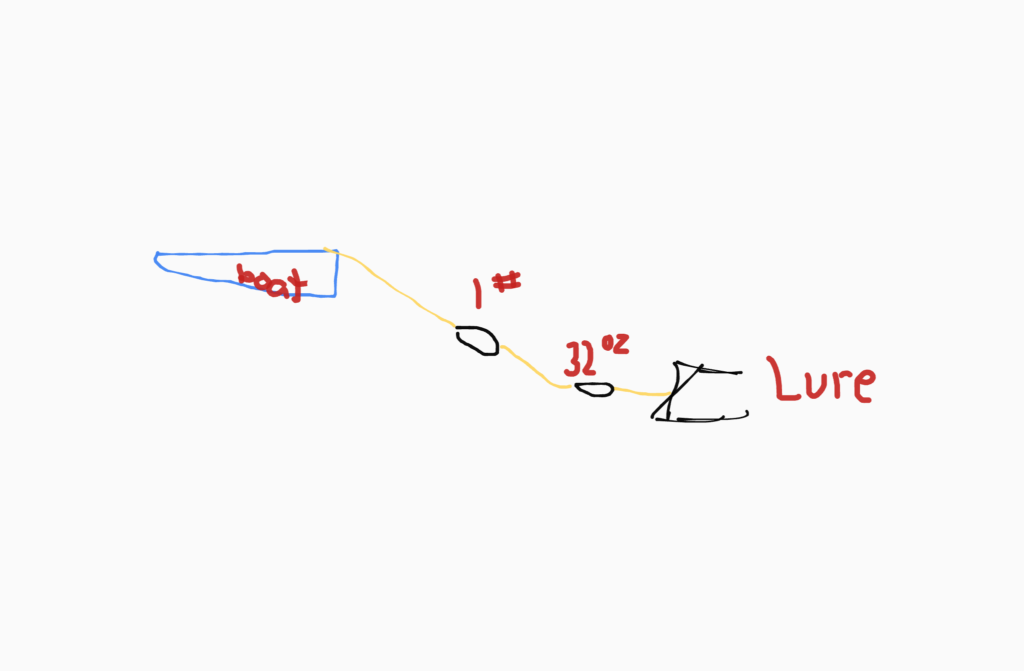I am starting a new series on the various factors that go into catching stripers. I came up with 50 as an arbitrary number that is no more factual than any of my opinions on fishing so use at your own risk. I think catching fish in general and striper specifically resolves down to a math formula. How many of these 50 factors can you get right determines how successful you will be with the catch. I think this is why professional charter captains always do much better than their amatuer counterparts. They simply get more of the factors correct than we do.
Captains do have a better network than we do and their network catches more fish so they have a big advantage on us but it still comes down to the factors. It is the same reason you catch more or less than your friend that is in the boat basically beside you all day trolling.
My guess is that I will be editing these pages more often than not as we continue to get better with fishing so if you are reading this by chance come back often.
Number 1 – Stripers tend to eat most often at sunrise and sunset. I think this is true, the question for me is can we get out or back safely.
Number 2 – Color of your lures matter big time. There is nothing that has more decision weighting than the color of the lures and the various combinations that you put in the water. Now all of this is in combination with water clarity, depth you need to fish, and especially the amount of sunlight. Stripers have a destinctive color range and guess what yellow and chartreuse are the center mass of that spectrum. For me the best antidote is to be ready with more combinations than you think you need. Fish need to see the bait stand out in the water so even when they are not completely ready to eat they will be opportunistic feeders so having something they can’t resist is key.
Number 3 – Full Moon, maybe no bigger controversy between fishermen than the effects of full moons on fishing. I have caught limit during full moons as well as being skunked so this effect alone does not have full bearing on if you catch or not. I do think it is true that fish can feed more at night during full moons but they also eat more because of higher tides and greater tidal flows. Add that to the mix of your formula but don’t count on it or not for success.
Number 4 – Sunlight by percentage, today’s weather apps can give you the percentage of sunlight. Add that to the angle of the sun’s rays by time of day and time of year you will have a better chance of finding them. For example, stripers do not have eyelids so as the water becomes flooded with light they tend to go deeper to get out of that sunlight and conversely when it is cloudier they can be found shallower. This is also a factor in picking bait colors. Fish need to see the bait stand out in the water so even when they are not completely ready to eat they will be opportunistic feeders so having something they can’t resist is key.
Number 5 – Tide, high vs low, incoming vs. outgoing, slack. Yep all of this matters for how much you will catch. I know a million people will disagree with me but I like the tide from one hour before transition all the way to one hour after. Most people hate the slack tide (cresting and not fast moving) but I find that is just not the case. Could be one of the other 49 factors playing out here but it does not bother me to be fishing in a slack tide. I have filled the boat up during slack tide. See this post all of this was done in a slack tide hour. I actually don’t think when the tide is ripping you get as many bites. We can fight about this when you get here.
Number 6 – Trolling speed. I tend to go the avg 3 kts for trolling but there are factors that come into play you need to be aware of as well. Speed over ground (SOG) is different from speed of the water (SOW) going under your boat. For instance if you are completely against the tidal flow of water the speed of water under your boat at 3kts SOG may be 6 kts SOW. and conversely if you are completely with the flow 3kts could effectively be 0kts SOW. Of course any angle other than 0 and 180 you will have to factor that in as well. If you are one of the people that must go 3kts you recognize this because depending on which direction you are going you either need to give it more gas or kick it in neutral ever so often. In reality, you need to take in the flow of water as well.
Number 7 – Add a Crazy Ivan (from Tom Clancy’s Hunt for Red October) over fish. When I see a big bunch of fish on the bottom they may not be ready to actively feed. I try to drop the bait right on their head then pick it up quickly. The way I do that is by turning the boat 90 deg from course which effectively slows down the bait and they drop. In just a few seconds I turn back to the original course and it lifts the bait off the bottom. There is little that creates a bite better than a piece of food getting away for a fish. You can also do this by kicking the motor in neutral for a few seconds. Either is fine and I choose mostly by what direction I would rather be going anyway.
Number 8 – Structure, Stipers will be in both but for various reasons. They tend to be structure oriented creatures and a very good place to look for them is on natural and man-made reefs. For us that includes the NNK reef, the Asphalt Pile, some of the wrecks around, Davidson wreck is a good one but please let someone that knows the area take you otherwise just stay away. But, like all good rules there are exceptions and you will catch likely bigger fish outside of structure you just need to find a big ball of bait fish. Sometimes the deeper the better, some of the very biggest fish we have ever caught is in the shipping channel under bait. I rarely fish directly over the reef as you get a bunch of schoolies and not the ones you are looking for (the honkers).
Number 9 – Trolling. Overall, trolling yields the best fish for the least amount of time fishing. It is easy to control many factors that add to your formula. Speed, depth, can troll multiple rigs at one time (I have had as many as 12). With that you can add a mix of colors, styles, depths, etc. and cover more ground than any other method. I know some find it boring but it gives me time to think and put in alternate strategies. I am not just grabbing the elephant tale in front of me and walking like so many do when they are with the fleet. If you find it boring it’s likely because you are not catching fish and just out for a boat ride.
Number 10 – Auxiliary gear, I’m talking about all of the things that make you lose fish that you would otherwise catch because you didn’t plan well. Line, leaders, swivels, snap hooks, etc. All of these should be in good working condition and be rated for the job. The big one does get away because we didn’t have the right equipment on at the time it called for it. I’ve had underrated line break, knots come undone, pretty much everything you can have happen it has happened to me. With that the saying goes and I believe it wholeheartedly that you catch all the fish at the dock. In other words, have your gear in top notch condition before you leave the dock. Have an extra rod or two so if something gets fouled you can quickly replace and straighten out any issues after you are fishing full strength again.
